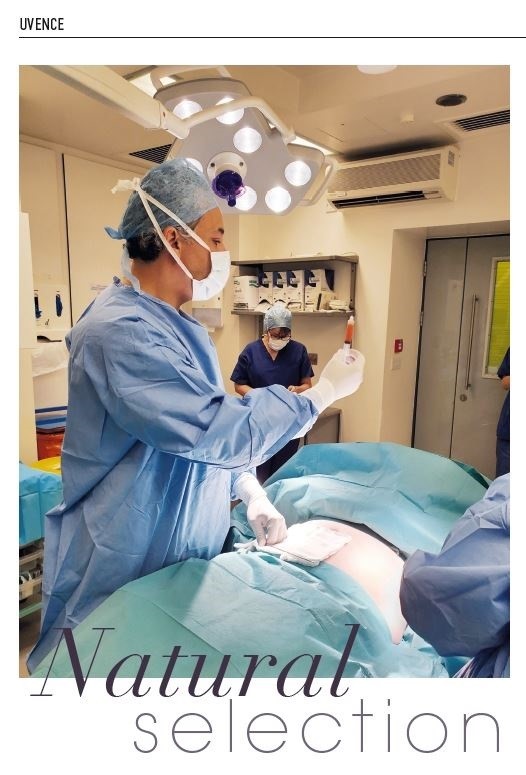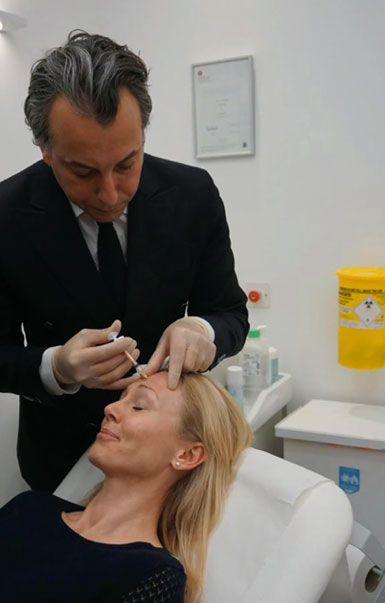
A new aesthetic rejuvenation method using autologous tissue could be the next step towards the future of fat transfer
Aesthetic practitioners can now have access to patients’ autologous tissue to perform rejuvenation treatments, thanks to a new treatment developed by surgeon Mr Olivier Amar, who specialises in fat transfer.
The process, Uvence, extracts and uses a patient’s own purified fat tissue to rejuvenate the skin in a wide range of treatments, bringing together high-quality liposuction, nano-fat grafting and cryogenic storage to create a standardised, minimally invasive treatment. Uvence was devised to provide an alternative to patients who typically tend to opt for toxin and filler to rejuvenate the skin, but who may prefer to have their own cells injected rather than synthetic substances, with no risk of rejection. While the process won’t provide patients with volume – Dr Amar explains that he himself will still use dermal filler on patients when necessary – it improves elasticity, smoothness and the overall appearance of the skin.
After collection and before injection, adipocyte fat – the substance which creates volume in patients who undergo fat-transfer procedures and is also responsible for abnormal build-ups of fat.
The purified tissue is then injected using superficial injections with a 25G cannula or needle to achieve a variety of skin treatments. Fully regulated by the Human Tissue Authority, a patient’s tissue belongs to them, and they can choose which practitioners they want to inject it.
THE PROCESS
- The procedure begins with the extraction phase, in which fat tissue is extracted from a patient using micro or mini liposuction. The fat tissue is then processed to remove adipocyte and other associated inflammatory substances
- The tissue undergoes washing, emulsification and decantation, the result of which provides a small quantity of fat extract rich in SVF stem cells, or “super enriched tissue”.
- Following the purification process, the tissue can then be reinjected anywhere on a patient’s body to transform the look, feel and complexion of problem areas of the skin; including the face, neck, décolletage and hands. The tissue improves the elasticity, smoothness and overall appearance of skin, and can be applied to treat scars and burns, or for general aesthetic purposes.
Surgeons operating at Uvence-approved collection centres – the company aims to open “as many as possible” across the UK, with a few opening each month from launch depending on the status of covid-19 at the time – can collect a patient’s fat during elective surgery for ease.
The Uvence system also incorporates cryogenic freezing, allowing a patient’s purified tissue to be preserved for up to five years to repeat the injection process multiple times as needs be.
Mr Amar is particularly interested in the potential medical uses for Uvence outside of facial aesthetics, such as for scar revision and cosmetic gynaecology, for which he says there is already a big traction for rejuvenation procedures to address vaginal atrophy and to add plumpness to the vaginal lips and pubic mound.

“This really is the future of cosmetic skin treatments, says Dr Amar. “It is hugely exciting to see the next step in standardisation and quality for this kind of treatment. The Uvence offering allows access to regenerative and personalised treatments and is the biggest advance in the field for nearly 15 years. “In terms of accessibility and convenience, this has never been seen before. The cryopreservation capability allows plastic and cosmetic surgeons alike to provide this treatment on a consistent basis to their patients without the need for further liposuction or tissue extraction.”


No Comments